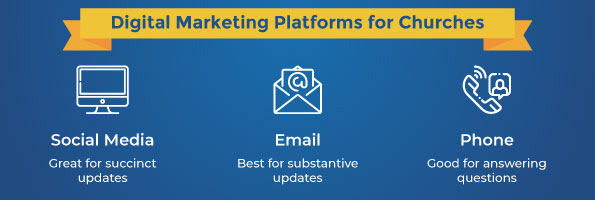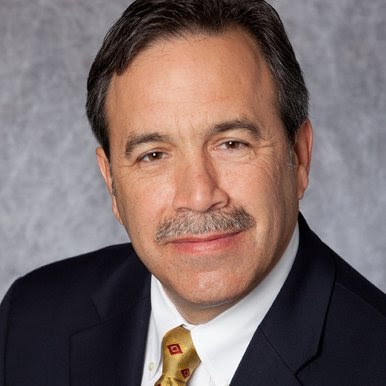
Times of crisis are often when people are at their best. We pray for those impacted by the virus, for everyone hurting and in need. We congregate regularly in a building, but our generosity and faithfulness are not confined to four walls. This is where fundraising for churches comes in.
Despite the pandemic, your congregants are prepared to step up to the plate, but as a church leader, it’s your responsibility to provide them with the means to do so. Just because churches are facing seemingly insurmountable challenges does not mean it’s time to stop fundraising. Rather, it’s time to ramp up your church’s fundraising efforts and develop a targeted stewardship strategy to overcome the distance.
At Greater Mission, we dedicate ourselves to serving the Church and faith-based organizations. We understand the challenges that you’re currently facing because we’ve helped others strategize to overcome those same obstacles. Drawing from firsthand experience, we’ll walk through three ways your leadership can continue to meet congregants’ needs and increase church fundraising efforts, all while remaining responsive to public health concerns:
- Offer online giving options.
- Provide frequent updates to church members.
- Remind members that gifts are about more than money.
Ready to continue fundraising for your church and foster faith-filled generosity among church members? Let’s get started.
1. Offer online giving options.
According to Greater Mission’s article on encouraging church members to give, collecting offerings is a fundamental component of operations for any size church. As you expand your ministry, you’ll naturally need more financial support to fund those initiatives.
Especially during trying times like now, when church doors remain closed due to COVID-19, it’s important to provide ways your church family can continue engaging from afar. Prior to the pandemic, many churches were already making the shift to online giving, and the implementation of social distancing accelerated the transition.
As you expand your mission programming, it’s important to have a strategy in place for making the transition to new online engagement opportunities as smooth as possible for members. Here are recommendations to consider as you pass around your digital collection plate:
- Design a compelling donation form. To begin accepting online donations, you first need a giving page. Using your church giving tools, design a donation form that captures essential information like name, contact information, and payment data. The longer the form, the more likely visitors will give up and exit the page. So keep it as simple as possible to drive members seamlessly through the process.
- Provide different giving methods. Inspire members to give their way. Ensure your online giving software allows you to accept multiple payment types, like debit and credit cards as well as ACH direct deposit. You may even consider enabling options like recurring donations to encourage regular contributions or text-to-give to promote mobile giving.
- Explain how to get started. Some of your not-so-tech-savvy congregants may be reluctant to give online. Ease their concerns by providing clear and easy-to-follow instructions in your next newsletter, email, or video recorded by your pastor.
Once you’ve developed your giving form and provided clear instructions, make sure to give gentle reminders to church members each week about the opportunities. Just as you likely include announcements reminding people to give in your regular worship services, continue doing so by taking a few moments of each service to remind them of the new options available at their fingertips.
By continuously mentioning the many ways to contribute to your church, you’ll generate a level of comfort amongst your congregation that will encourage them to engage in online giving.
2. Provide frequent updates to church members.
Given the massive and accelerated shift to the virtual sphere, now is a great time to improve your digital marketing efforts. Providing updates helps your ministry connect with church members, share the precautions you’re taking to ensure safety, and inspire congregants to give.
Here are three primary outlets that churches everywhere have used successfully when connecting to church members:

- Social Media: Connect your members and regular attendees to your social media channels. Your church’s social media pages provide a platform for succinct updates regarding your programs and mission. Not to mention, leveraging social media can help you appeal to younger church members. You may even take advantage of live streaming services like Facebook Live to stream your worship services.
- Email: When you have more substantive updates, send an email to your congregation. For instance, if you’re planning to return to in-person services, this platform provides the space and digital tools necessary to share your response plan (like sanitizing public spaces and implementing social distancing procedures). Additionally, you might consider sending a regularly-scheduled newsletter for more consistent communication.
- Phone: For those who prefer more traditional communication methods, make sure someone is available to answer the church phone instead of greeting them with a recording. Most phone systems allow call forwarding, which means someone off-site can answer church calls. With this option at hand, your staff can answer calls from your congregants or from prospective members even as they work from home.
In your regular communications such as during your weekly service, explain how you’ll be using various digital outlets to convey information and update members on changes to the activities at your church. This allows church members to keep an eye on the platforms that most readily meet their needs.
According to CharityEngine’s multichannel fundraising guide, using a multichannel approach to communicate with your members will ensure they see your message (hopefully in multiple places) so that you stay at the forefront of their minds. This way, you can continue stewarding them despite the distance.
3. Remind members that gifts are about more than money.
Fundraising for your church is about more than dollars and cents. It’s about spiritual growth and establishing a culture of generosity at your church. In fact, a lack of giving is usually not a financial problem but a spiritual one.
While a fundraising approach alone might produce results, that doesn’t mean it’ll inspire faith-filled generosity or lead to substantial stewardship and discipleship changes. In other words, focusing solely on fundraising principles will cause you to miss a vital opportunity to instill discipleship values. In turn, this may impact your ability to steward lifelong supporters amongst followers of Jesus.
When it comes to giving, churches often focus solely on the basis of covering administrative costs. By doing this, they overlook the purpose behind it all: Jesus. Instead, connect giving to spirituality.
Identifying scripture as the root of your appeals will help members understand why they should give and how it can help spread the word of the Lord. Share how God is at work in your church, and invite them to become a part of it. When people gain a biblical perspective of their role as stewards, you can effectively establish a culture of generosity.
Remember, your goal should be to encourage faith-filled generosity powered by the desire to serve God. After all, those who are the most giving are often those who are immersed in their faith. Just be sure to convey that the need for their support extends beyond the pandemic, so once social distancing guidelines dissipate, their commitment won’t waver.
Conclusion
Passing the offering plate is a ritual that gives church members the opportunity to show their faithfulness through their stewardship to God and His Church. However, with social distancing guidelines, churches and other spiritual organizations often find it difficult to make the necessary transition to digital stewardship.
Taking every step possible to support your members during this difficult time will help your church stand out. An online giving page is a great start, but you’ll need to work beyond this by proactively communicating and connecting giving to faith. Only then will you be able to establish an unwavering culture of generosity amongst your congregation.
For more guidance on how to take your church fundraising to the next level, we recommend this Qgiv article on church donation forms and best practices. Need an online giving solution perfect for churches and their congregation? Request a Qgiv demo to learn more.
Thomas Sonni
Founder & President, Greater Mission
Tom Sonni founded Greater Mission in 2006 so that he might expand his life’s work, empowering the Church to live and share the greatest mission ever conceived: To know Jesus Christ and make Him known. Tom brings more than twenty-five years of experience designing stewardship models and managing capital campaigns along with years of experience in strategic planning, constituent research, annual appeals, major gifts, and legacy giving.
Tom has guided efforts that have raised over $400 million for the Church. His service has strengthened the Arch/Dioceses of Atlanta, Baltimore, Boston, Cincinnati, Cleveland, Lansing, Miami, Orlando, Palm Beach, Providence, Richmond, St. Petersburg, and Venice, among others. He led the creative design of With All Your Heart – a dynamic new mission advancement model that integrates spiritual formation and lifting parish communities to new levels of generosity to sustain and expand mission and ministry.



